Enlisted sailors form the foundation of the U.S. Navy, carrying out the vital, day-to-day work that keeps the fleet mission-ready. They are trained in a wide variety of specialties -- from engineering, aviation and medical support to intelligence, communications, logistics and administration.
Enlisted Navy levels are a little different than the other U.S. military services, which organize service members according to ranks. By contrast, the Navy organizes its force according to rates, although it also follows the same E-1 to E-9 paygrade structures as the other services.
A sailor’s “rating” refers to their job specialty, while their “rate” reflects both their rating and their paygrade.
“The U.S. Navy's unique rank structure can be confusing,” according to Nicholas Roland, historian, Naval History and Heritage Command. “The history of Navy ranks is equally complicated, and includes an assortment of ranks that no longer exist and some that have disappeared, reappeared, and disappeared again.”

As sailors advance in rate, their responsibilities grow, along with their role in ensuring the success of the mission. Promotion from E-1 through E-3 is now automatic after set periods of time in service, and as of July 2024, sailors are also automatically advanced to petty officer third class (E-4) after 30 months of service, provided they retain their commanding officer’s endorsement and meet conduct and performance standards.
Certain technical fields and Professional Apprenticeship Career Track (PACT) sailors continue to follow tailored timelines.
Those who rise to become petty officers and chief petty officers take on expanded duties in leadership, mentorship and technical expertise, guiding junior sailors while maintaining operational excellence.
Commissioned officers are the Navy’s strategic leaders and decision-makers. They command ships, squadrons and units; plan missions; and manage people and resources. Officers typically enter through Officer Candidate School (OCS), the Naval Reserve Officers’ Training Corps (NROTC) or the U.S. Naval Academy in Annapolis, Maryland. Their leadership begins at the division level and can progress to commanding entire fleets and shaping the Navy’s future at the highest levels.
Navy Enlisted Rates
Enlisted Navy rates encompass various ranks categorized into apprenticeships (E-1 to E-3), petty officers (E-4 to E-6) and chief petty officers (E-7 to E-9). Apprenticeships comprise entry-level positions, including seaman recruit, apprentice and seaman, often referred to as non-rated personnel.
Petty officers are intermediate ranks specializing in specific job roles. Chief petty officers represent senior enlisted leaders, with extensive experience and expertise in their fields. They serve as mentors, supervisors and technical authorities within their units.
The rate of enlisted sailors can be determined by their rating badge, which is a combination of a rate (paygrade) badge of stripes or chevrons, depending on rank. It also can be determined by rating (occupational specialty), represented by the symbol just above the stripes or chevrons on the left sleeve of most uniforms.
Enlisted Navy rates are broken down into three levels: apprenticeships (E-1 through E-3), petty officers (E-4 through E-6) and chief petty officers (E-7 through E-9).
- Apprentice rates (E-1 through E-3)
- Petty officer rates (E-4 through E-6)
- Chief petty officer rates (E-7 through E-9)
- Master chief petty officer of the U.S. Navy (MCPON)
Enlisted Navy Rates: Apprentices (E-1 through E-3)
The enlisted paygrades E-1 through E-3 in the Navy are commonly referred to as apprenticeships. Each apprenticeship is designated to indicate eligibility for entry into various ratings. General apprenticeship designators include:
- Airman -- Aviation Ratings
- E-2 -- Airman Apprentice (AA)
- E-3 -- Airman (AN)
- Fireman -- Naval Engineering Ratings
- E-2 -- Fireman Apprentice (FA)
- E-3 -- Fireman (FN)
- Seaman -- Deck and Administrative Ratings
- E-2 -- Seaman Apprentice (SA)
- E-3 -- Seaman (SN)
- Hospitalman -- Health-Care Ratings
- E-2 -- Hospitalman Apprentice (HA)
- E-3 -- Hospitalman (HN)
Navy apprenticeships are your first steps in becoming an integral part of the Navy. As an apprentice, your job will be to apply the skills and knowledge you learned in basic training, begin training for your career in the Navy and continue developing your followership skills. You will be expected to follow all orders and tasking given by your superiors.
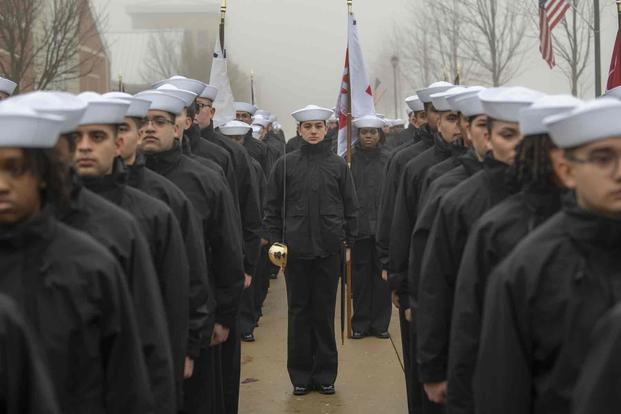
Seaman Recruit (E-1)
Seaman recruit (SR) is the lowest enlisted rank in the Navy, just below seaman apprentice. Two separate paygrades exist within this rank -- one for those with service of less than four months, with a higher pay scale for those in service for more than four months, even if they have not yet advanced to seaman apprentice. Navy seaman recruits currently do not bear any uniform rank insignia.
Moving up in rate: In July 2024, the Navy announced a major update to its advancement system as part of its transition to billet-based advancement. Promotions from E-1 through E-4 are now based primarily on time-in-service (TIS):
- E-1 to E-2: 9 months TIS
- E-2 to E-3: 18 months TIS
- E-3 to E-4: 30 months TIS
This change replaced the previous system that required exams and competition for advancement to E-4. However, there are important exceptions:
- Commanding officers can still advance high-performing sailors early.
- Sailors with poor performance or disciplinary issues may be denied automatic advancement.
- Nuclear, advanced technical, and electronics ratings continue to follow accelerated advancement rules.
- Undesignated sailors in the Professional Apprenticeship Career Track (PACT) advance under the timelines of that program, which are similar but tied to rating selection.
Seaman Apprentice (E-2)

The title for an E-2 sailor depends on their occupational community:
- Seaman apprentice -- deck and administrative fields (white stripes on navy blue uniforms; navy blue on white uniforms)
- Hospitalman apprentice -- medical field (white/navy blue stripes as above)
- Fireman apprentice -- engineering and hull fields (red stripes on both white and navy blue uniforms)
- Airman apprentice -- aviation fields (green stripes on both white and navy blue uniforms)
- Constructionman apprentice -- Seabees (light blue stripes on both white and navy blue uniforms)
Apprenticeships are the first step toward becoming a fully trained sailor. At this stage, you’ll apply the skills learned in boot camp, begin training for your chosen career field and develop strong followership skills while supporting your command’s mission.
Moving up in rate: Advancement from E-1 to E-2 is typically automatic after about nine months of service, provided the sailor meets time-in-rate requirements, maintains good performance and conduct, and has command approval. Advancement to E-3 generally follows after another nine months under the same conditions.
Seaman (E-3)

As with seaman apprentices (E-2), the actual title for an E-3 depends on the sailor’s community -- seaman, fireman, airman, constructionman or hospitalman. The color of the group rate mark on their uniform also varies by community.
Seamen perform duties such as ship and equipment maintenance, standing lookout and helmsman watches, serving on damage control and security teams, assisting with naval ceremonies and working alongside qualified personnel to gain training and experience.
Moving up in rate: Advancement to E-3 usually occurs after 18 months of service (nine months as an E-2), provided the sailor meets time-in-rate requirements, maintains good performance and conduct, and has their commanding officer’s recommendation.
Enlisted Navy Rates: Petty Officers (E-4 through E-6)
Advancement to petty officer third class (E-4) represents a major leadership shift. Most sailors are automatically promoted to E-4 after roughly 30 months of service, with their commanding officer’s endorsement, without taking an advancement exam. Some specialized fields, such as nuclear and advanced technical ratings, still require service obligations for accelerated advancement.
Advancement exams for E-5 and E-6 are offered twice a year, in March and September, while E-7 exams are held annually in January. Promotions from petty officer second class (E-5) through chief petty officer (E-7) are competitive, based on exam performance, leadership evaluations and available billets.
The Navy is moving beyond a purely exam-and-quota system. Under the “Command Advance to Position” program, commanding officers (COs) can now promote eligible sailors into vacant E-5 and E-6 billets if the sailor agrees to extend service. Under this new version of the program, the advantage for sailors is the opportunity to serve at a higher rank, while the commands benefit by filling empty jobs. This billet-based advancement aims to tie promotions more closely to available positions, improve career transparency and fill critical sea billets.
Petty officers and chief petty officers take on expanded leadership, mentorship and technical responsibilities, guiding junior sailors while maintaining operational excellence.
Petty Officer Third Class (E-4)
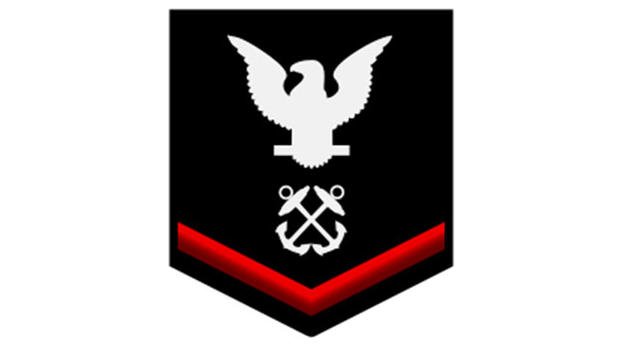
Promotion to petty officer third class (PO3) is more than a pay raise; it marks a shift from being led to leading others. PO3s assume higher responsibility, authority and accountability. They are responsible not only for their subordinates’ work, but also for their well-being, professional development, morale, education, training and adherence to standards. Expectations for performance rise significantly at this rank.
Moving up in rate: For most sailors, promotion to E-4 is automatic after approximately 30 months of service, with a commanding officer’s endorsement and acceptable performance evaluations. Some specialized fields may still require additional service obligations or qualifications for accelerated advancement.
Read More: The Navy Is Making Promotion to E-4 Automatic After 30 Months of Service
Petty Officer Second Class (E-5)

Promotion to petty officer second class (PO2) signifies greater expectations in technical expertise and leadership. PO2s manage larger work groups or watch sections and continue to be responsible for the well-being, performance, professional development, morale, education, training and standards of behavior of their subordinates.
Moving up in rate: Advancement to E-5 can occur either through the traditional Navywide advancement exam or under the Command Advance to Position program, where commanding officers may promote eligible sailors into vacant E-5 billets, provided the sailor agrees to extend service if necessary. This system ties promotions more closely to available positions while still considering performance and CO recommendations.
Read More: Navy Shakes Up Commanders' Merit Promotions
Petty Officer First Class (E-6)
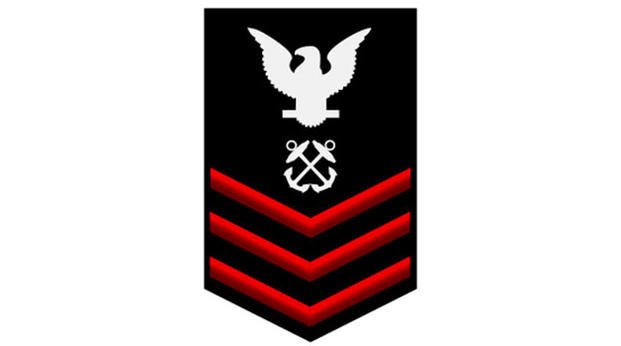
Promotion to petty officer first class (PO-1) marks a transition from junior to senior petty officer. PO-1s have increased expectations in leadership and technical expertise and begin preparing for advancement to chief petty officer. They may manage larger work groups, resources and technical equipment while continuing to be responsible for their subordinates’ well-being, performance, professional development, morale, education, training and maintaining standards of behavior.
Moving up in rate: Advancement to E-6 can occur either through the traditional Navywide advancement exam or via the Command Advance to Position program, where commanding officers may promote eligible sailors into vacant E-6 billets if the sailor agrees to extend service. This system ties promotions more closely to available positions, while performance, CO recommendations, and completion of required qualifications and leadership courses are still considered.
Enlisted Navy Rates: Chief Petty Officers (E-7 through E-9)
Chief Petty Officer (E-7)
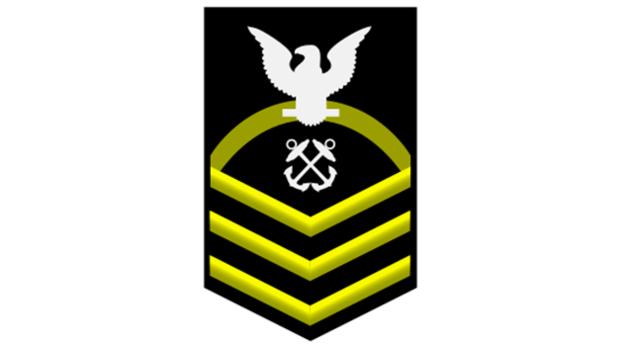
Becoming an E-7 is a major milestone in the U.S. Navy. This rate “carries with it unique responsibilities and privileges,” according to the Navy Chief Petty Officer Creed.
“In the Navy, when a Sailor makes chief (E-7), it is a big step for that service member,” explained Joseph Gardner, command master chief of Joint Base Charleston, South Carolina. “They change uniforms and add a myriad of extra responsibilities.”
In April 1993, on the 100th anniversary of the creation of the rank of chief petty officer, Chief of Naval Operations Admiral Frank B. Kelso II stated: "Our challenge to Chief Petty Officers of the 21st Century is to reaffirm the commitment to faith and fellowship that have allowed their comrades-in-arms before them to wear ‘the hat’ with tremendous pride.”
Chief petty officers are responsible for, have the authority to accomplish and are held accountable for:
- Leading sailors and applying their skills to mission-critical tasks
- Developing enlisted and junior officer sailors
- Communicating the core values, standards and information of the Navy to empower sailors
- Supporting the chain of command and fellow chief petty officers with loyalty
Moving up in rate: Unlike E-4 through E-6, which now include the “Command Advance to Position” billet-based option, advancement to chief petty officer remains a centralized Navywide process. Advancement is based on three main factors: your basic eligibility requirements, Navywide Final Multiple Score (FMS) and the Chief Petty Officer Promotions Board.
Basic eligibility typically includes:
- Your CO's recommendation
- About 11 years’ time in service (TIS)
- About 36 months’ time in rate (TIR)
- Completion of your rating-specific qualifications and nonresident courses
- Completion of the Navy Leadership Training Continuum (LTC) chief indoctrination course
Navywide competition: Once sailors meet these eligibility requirements, they compete in the Navywide Advancement-in-Rate process, where the FMS and Promotions Board determine who advances.
This system ensures that E-7 promotions remain competitive and merit-based, while E-4 through E-6 now offer more flexibility through billet-based advancement when vacancies exist.
Senior Chief Petty Officer (E-8)
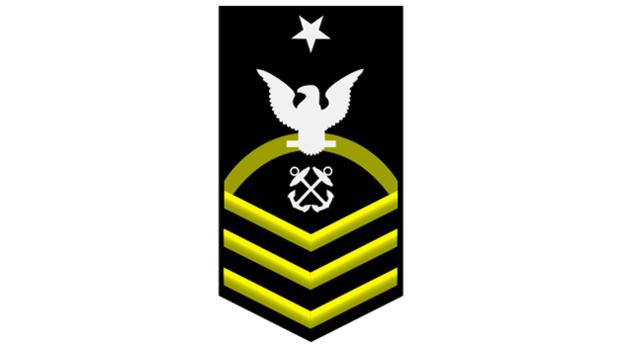
Senior chief petty officers (SCPO) are the senior technical supervisors within a rating or occupational field. SCPOs primarily supervise and train enlisted personnel on system and subsystem maintenance, repair and operation rather than individual unit tasks. With broad experience and specialized training, SCPOs provide commands with a higher level of technical and managerial expertise than expected at the chief petty officer level.
Moving up in rate: Advancement to senior chief petty officer is competitive and conducted through the Senior Chief Petty Officer Selection Board, rather than being automatic.
Basic eligibility typically includes:
- CO recommendation
- Minimum of 16 years’ time in service (TIS)
- Minimum of 36 months’ time in rate (TIR)
- Completion of the CPO Leadership Training Continuum (LTC)
Senior Chief Petty Officer Selection Board: Eligible and recommended sailors are considered by the board, which evaluates candidates based on:
- Professional performance at sea
- Education and training
- Evaluations
- Physical fitness standards
This process ensures that SCPOs are selected based on leadership ability, technical proficiency, and readiness to guide and mentor junior personnel.
Master Chief Petty Officer (E-9)

Master chief petty officers (MCPO) are the senior enlisted leaders in the Navy. They hold substantial administrative and managerial responsibilities over enlisted personnel and play a critical role in shaping policy and guiding operations within their rating, command or the broader Navy.
If selected for the position of command master chief, an MCPO serves as the senior enlisted adviser to the commanding officer, overseeing morale, training and utilization of enlisted personnel. In this role, they carry out established command policies and provide direct counsel to the command leadership. Command master chiefs take precedence over all other enlisted members within their command.
Moving up in rate: Advancement to master chief petty officer is competitive and conducted through the Master Chief Petty Officer Selection Board.
Basic eligibility typically includes:
- CO recommendation
- Minimum of 19 years’ time in service (TIS)
- Minimum of 36 months’ time in rate (TIR)
Candidates who meet eligibility and are recommended by their CO are considered by the selection board, which evaluates all eligible sailors for promotion to MCPO based on performance, leadership and experience.
Master Chief Petty Officer of the Navy

The master chief petty officer of the Navy (MCPON) is the most senior enlisted member of the U.S. Navy, serving as the primary adviser to the chief of naval operations (CNO) on issues affecting enlisted personnel. This position is roughly equivalent to senior enlisted roles in other U.S. military branches, such as the sergeant major of the Army or chief master sergeant of the Air Force.
Appointed by the CNO, the MCPON acts as a spokesperson for enlisted sailors, addressing concerns and representing their interests at the highest levels of Navy leadership. The duties and responsibilities of the MCPON are adapted to the priorities of the current Navy leadership and may include advising the chief of naval personnel and other senior officials on enlisted personnel matters.
Navy Officer Ranks
Navy officer ranks cover both commissioned officers and warrant officers, who are specialists and experts in specific military domains. When it comes to moving up the ladder, officers undergo Senate confirmation to make it official.
Commissioned officers do not enlist. They're on board for the long haul, serving at the U.S. president's discretion. They receive a commission, which is an official job description that outlines their duties and responsibilities based on their rank. It's like getting the keys to the ship, but with a hefty dose of responsibility.
Warrant Officer (CWO2, CWO3, CWO4, CWO5)
Navy warrant officers are highly experienced technical specialists and leaders who apply their expertise to both technical and leadership challenges rather than primarily administrative or managerial tasks. Only senior enlisted personnel -- typically E-6 and above -- with roughly 12-14 years of service are eligible to apply for the Navy’s warrant officer program.
Warrant officers provide critical supervision and guidance at sea, overseeing the maintenance, operation and repair of complex equipment and systems, from legacy machinery to cutting-edge electronics, often during extended deployments. They also serve as a vital link in communications and coordination within the chain of command, ensuring technical requirements are met effectively.
The Navy’s warrant officer ranks range from chief warrant officer 2 (CWO2) to chief warrant officer 5 (CWO5), with increasing responsibility and authority at each level.
While warrant officers focus on technical expertise and operational leadership, they work closely with both enlisted personnel and commissioned officers -- the Navy’s strategic leaders responsible for commanding ships, squadrons and units, planning missions and managing resources -- bridging the gap between operational proficiency and higher-level decision-making.
Ensign (ENS, O-1)
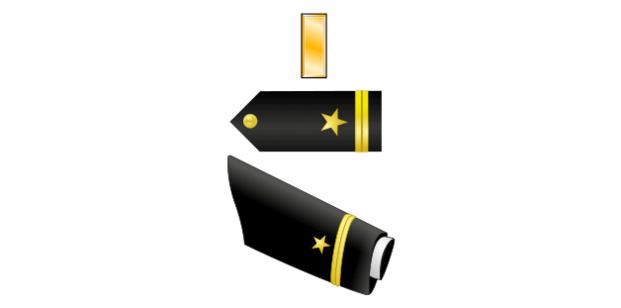
The initial commissioned officer rank for graduates of the United States Naval Academy (USNA), Navy ROTC (NROTC), Officer Candidate School (OCS) and other commissioning sources. Most ensigns are either in training pipelines for their warfare or staff specialties, or serving as junior division officers in fleet units.
Lieutenant, Junior Grade (LTJG, O-2)
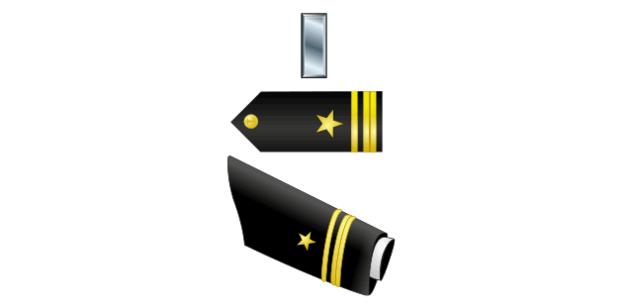
Promotion to LTJG generally occurs about two years after commissioning. Some officers continue their training in warfare or staff specialties while others serve in fleet units as division officers.
Lieutenant (LT, O-3)
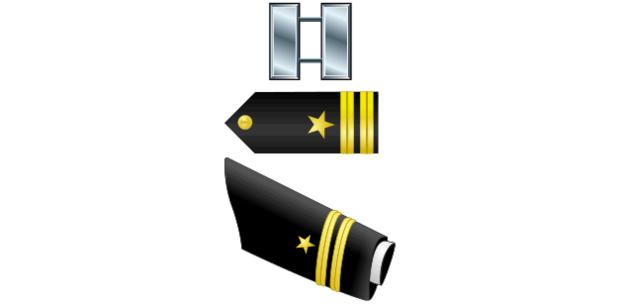
Lieutenants typically serve as division officers or department heads, depending on the size of their ship, squadron or unit. Senior LTs may lead departments on larger ships. In SEAL teams, ensigns, LTJGs and LTs commonly serve as platoon leaders.
Lieutenant Commander (LCDR, O-4)
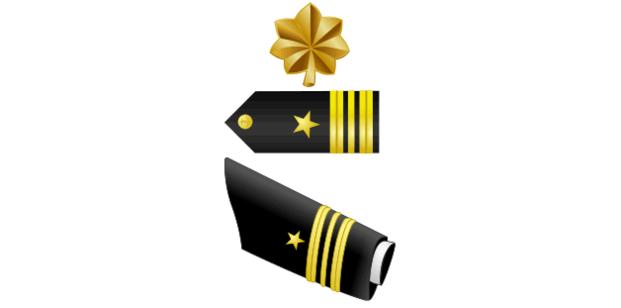
LCDRs often serve as department heads or executive officers on ships, submarines or aviation squadrons. Some may command smaller ships, such as minesweepers or patrol craft. On SEAL teams, LCDRs may act as executive officers.
Commander (CDR, O-5)

Commanders typically lead frigates, destroyers, fast-attack submarines, smaller amphibious ships, aviation squadrons, SEAL teams or shore installations.
Captain (CAPT, O-6)
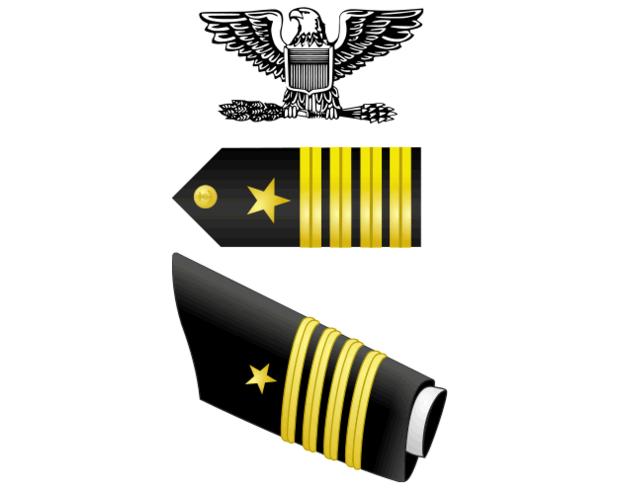
Captains command major Navy units, including aircraft carriers, amphibious assault ships, cruisers, destroyer squadrons, carrier air wings, ballistic missile submarines, submarine squadrons, SEAL groups, and significant shore installations.
Navy Admirals
Rear Admiral Lower Half (RDML,O-7)
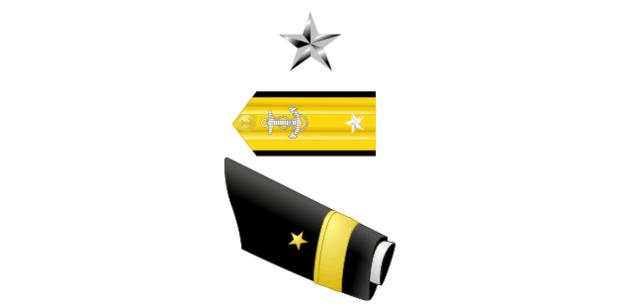
A one-star rank, it is the first of the flag ranks. At-sea commands include commanding an amphibious group, carrier-cruiser group, carrier or expeditionary strike group. Flag officers also may be assigned as deputies to larger commands.
Rear Admiral Upper Half (RADM, O-8)

A two-star rank. At-sea commands include commanding an amphibious group, carrier-cruiser group, carrier or expeditionary strike group. Flag officers also may be assigned as deputies to larger commands.
RDML and RADM are often “at-sea” or “staff” positions depending on assignment.
Vice Admiral (VADM, O-9)
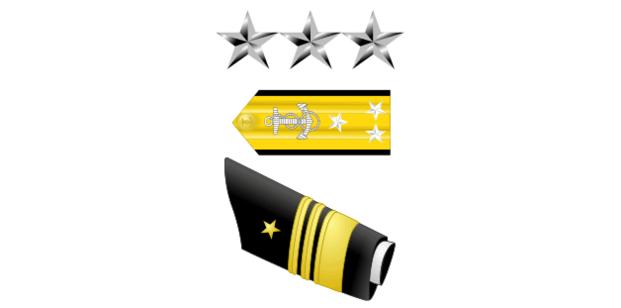
A three-star rank. Commands numbered fleets and holds positions as deputies for regional commands.
Admiral (ADM, O-10)
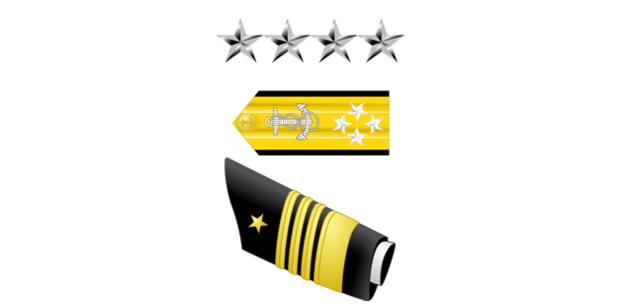
The most senior flag rank. Assignments for admirals include commanders of regional commands, joint commands, chief of naval operations and chairman of the Joint Chiefs of Staff.
VADM and ADM typically are strategic-level leaders rather than direct ship commanders.
Fleet Admiral (FADM)

A wartime designation that has not been assigned since World War II when five stars were awarded to William D. Leahy, Ernest King, Chester Nimitz and William Halsey. It’s not an active rank today.
How Promotions Work in the Navy
The Navy has rules for how sailors move up in rank, including required courses, exams and time spent at each rank, and all progress is tracked in official worksheets. Before asking for changes or checking advancement, sailors and their commands must make sure all courses are done, evaluations are current, and they meet time and performance requirements. An overview of this process can be found on the Navy’s Enlisted Career Advancement page.
Enlisted Promotions
Sailors generally advance through the junior enlisted ranks (E-1 to E-3) based on time-in-service and satisfactory performance. Traditionally, sailors advance by serving a minimum amount of time at their current rank, then taking an advancement exam offered twice a year. Those scores are then added to a complex formula that compares them against all other sailors in their job field to determine who will make the cut based on quotas set by the Navy.
This quota system sometimes leads to situations where high-achieving sailors struggle to advance, because either their job field is small or there has not been enough movement in the upper ranks.
A seaman recruit (E-1) typically advances to seaman apprentice (E-2) after about nine months, then to seaman (E-3) after another nine months, provided they maintain good conduct and meet performance standards.
Promotion to petty officer third class (E-4) -- the first noncommissioned officer rank -- is now automatic after 30 months of service for most sailors, without requiring an advancement exam, as long as performance standards are met and the commanding officer provides endorsement.

Advancement to petty officer second class (E-5) and petty officer first class (E-6) remains competitive, using traditional Navy-wide advancement exams as well as the Command Advance to Position program, which allows commanding officers to promote eligible sailors into vacant billets if the sailor agrees to extend service.
Senior enlisted promotions -- chief petty officer (E-7), senior chief petty officer (E-8) and master chief petty officer (E-9) -- continue to be highly competitive, requiring years of service, excellent evaluations and selection board approval. Advancement into these ranks reflects a significant leadership transition, placing sailors at the center of mentorship, operational readiness and the Navy’s professional culture.
Officer Promotions
Navy officers typically move from ensign (O-1) to lieutenant junior grade (O-2) in about two years, and then to lieutenant (O-3) after another two years, depending on their community and performance. Promotion to lieutenant commander (O-4), commander (O-5) and captain (O-6) becomes increasingly competitive, based on professional performance, leadership, education and the evolving needs of the Navy.
Selection boards convene to determine which officers are “best and fully qualified” to assume greater leadership responsibilities. Promotions to flag officer ranks (rear admiral and above) are extremely competitive and rely on a distinguished record of service and the Navy’s strategic requirements.
Limited Duty Officer (LDO) and Chief Warrant Officer (CWO) Programs
The Navy also offers two unique commissioning paths for senior enlisted sailors: the Limited Duty Officer (LDO) and Chief Warrant Officer (CWO) programs. Both are designed to recognize the technical expertise and leadership developed during an enlisted career and bring that experience into the officer corps.
CWOs serve primarily as technical specialists, providing deep subject-matter expertise in fields such as engineering, aviation maintenance and intelligence. LDOs, while also rooted in technical backgrounds, take on broader leadership and management responsibilities, often commanding units and filling billets reserved for prior-enlisted officers.
“LDOs are technically oriented officers who perform duties in specific occupational fields and require strong managerial skills,” according to the Department of the Navy. “CWOs are technical specialists who perform duties requiring extensive knowledge and skills of a specific occupational field.”
Together, these programs let the Navy capitalize on the depth of enlisted knowledge, blending technical mastery with leadership skills.
Interested in Joining the Military?
We can put you in touch with recruiters from the different military branches. Learn about the benefits of serving your country, paying for school, military career paths, and more: sign up now and hear from a recruiter near you.
Konstantin Toropin, formerly of the Military.com staff, contributed to this report.
















